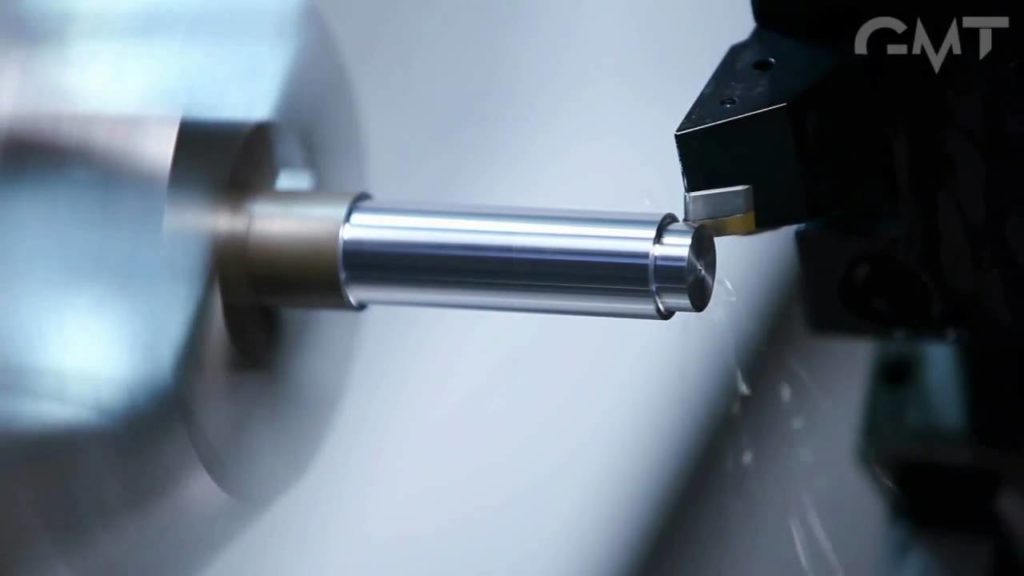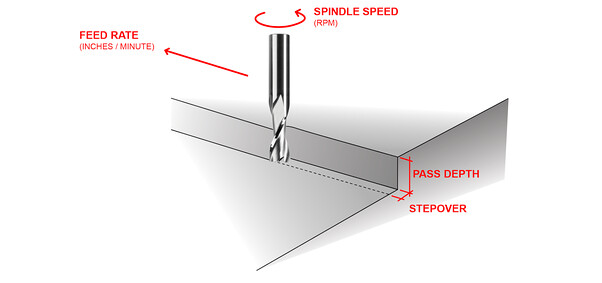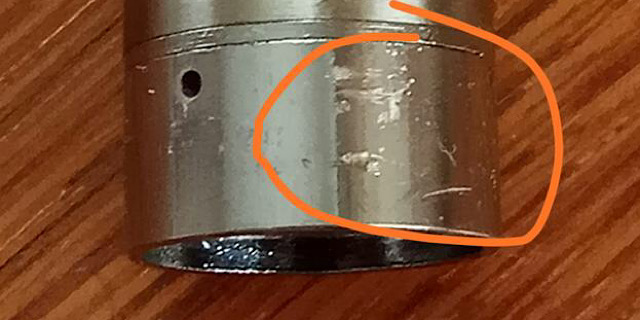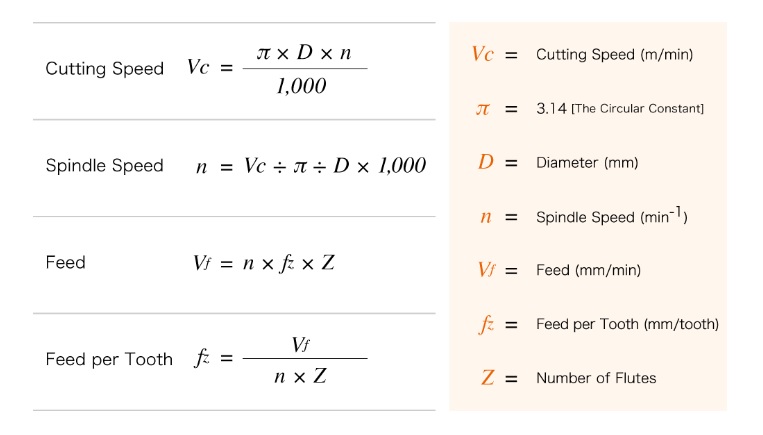How to Determine Feed Rate Cnc
CNC machining is a subtractive manufacturing process that involves shearing away material chips until the final product is achieved. So first, the machinists need to know the amount of material the machine will shear off in one revolution and the speed at which the CNC machine will move. Here is where the difference between feed rate and cutting speed is important.
When designing the parts for CNC machining, it is important to consider these parameters. This is because they ensure the optimization of different parts of the CNC machining process. While cutting speed is more important in optimizing factors like tool life and power consumption, the feed rate is vital in determining the machining time and roughness of the finished area. This article will compare feed rate vs. cutting speed and explain how to derive each of them.
What is Cutting Speed?
Cutting speed is generally defined as the relative velocity between the surface of the workpiece and the cutting tool. Some experts also define it as how fast the workpiece moves past the cutting edge of the tool. Machinists measure it in meters per minute (m/min) or feet per minute (ft/min). The cutting speed is a quite important factor in the determination of other parameters of CNC machining, such as cutting temperature, power consumption, tool life, etc. Its influence in these parameters serves as a significant difference between feed rate and cutting speed.

It is necessary to ensure that the cutting speed is optimum so that the CNC machining process will give the best part. However, it is possible to predict the optimum cutting speed for a particular CNC machining process by considering other factors. Examples of such factors include:
Workpiece Hardness
One of the most important factors that determine cutting speed is the hardness of the material being cut. The harder the material, the slower the cutting speed, and vice versa. For example, machining materials like steel will require a lower cutting speed compared to aluminum.
Cutting Tool Material
There are different lathe tools used for various CNC machining. Each of these tools is also made with different materials, hence possessing different hardness properties. The cutting tool material will have a significant impact on the cutting speed used in a machining process. If the cutting material is of high strength, the machinist can utilize a high cutting speed to a little detriment. However, softer cutting tool materials will tend to wear out quickly with higher cutting speeds. This will lead to shorter tool life.
The Expected Tool Life
How long the machinist wants the tool to last is another factor that is important in determining the cutting speed. This will include considering variables such as how much the tool cost and the cost of the tool compared to the quantity of parts being produced. If variables like this are favorable, then a high speed might be feasible for use.
What is Feed Rate?
Feed rate is the distance which the cutting tool during one spindle revolution. It is also defined as the velocity at which the cutter is advanced against the workpiece. It is measured in either inch per revolution or millimeters per revolution (ipr or mpr) for turning and boring processes. However, machinists use the inches per minute or millimeters per minute (ipm or mpm) for milling processes. In calculating the feed rate, the machinist considers the number of flutes (or teeth) the cutting tool has and calculates the feed rate for each tooth.

The feed rate also affects the same factors that the cutting speed influences. The only difference is that its effects are to a lesser extent. However, the feed rate is important in the final aesthetic look of the machined part (i.e., the surface finish of the machined part). Hence, its optimization is also quite important in CNC machining processes. To determine its optimum value, machinists consider factors such as the ones below:
Cut Width
Any cut width that is less than half the diameter causes chip thinning. Chip thinning is a manufacturing defect where the chipload (amount of material cut by the tool in one revolution) is reduced. Chip thinning could lead to a longer lead time; hence it is important to avoid it. In addition, increasing the feed rate will help reduce the effects of chip thinning, hence, increasing productivity and tool life.
Other factors that might influence feed rate include:
- The type of tool.
- The power available at the machine spindle.
- The strength of the workpiece.
- The threads per inch (TPI) for taps, die heads and threading tools, etc.
Upload Your File and Get Started Today
What is the Difference Between Feed Rate and Cutting Speed?
Due to the close types of definitions both parameters have, it is possible to confuse them with each other. Some machinists would also refer to this parameter as the difference between speeds and feeds. There are quite a few practical factors that serve as the difference between feed rate and cutting speed. Examples of such factors include:
Cutting Temperature and Tool Life
The cutting temperature is a crucial factor that proves a difference between feed rate and cutting speed. This is because the higher cutting temperature can hamper parameters such as the part's tool life and surface finish. The extent of the effect of both parameters on cutting temperature and tool life differentiates them from each other. It has a comparatively lower effect on the cutting temperature and tool life than cutting speed for feed rate. Hence, the difference between feed rate and cutting speed is the extent of their effect on cutting temperature and tool life.
Surface Roughness and Scallop Marks

Scallop marks are also known as feed marks. These marks always accompany CNC machined prototypes and parts, and they are the main cause of surface roughness. The feed rate has a direct influence on the scallop marks present on any part. Hence, the higher the feed rate, the higher the degree of scallop marks and surface roughness. However, cutting speed does not affect scallop marks; hence it does not affect surface finishes.
Directrix and Generatrix
In geometry, a generatrix is a point or surface that generates a new shape when moved along a given part. The given path through which the generatrix moves is the directrix. In machining, the basic goal is to create geometrical surfaces with aesthetically pleasing finishes and higher accuracy. Hence, these two parameters are required in machining processes. The difference between speeds and feeds is that the cutting speed provides the generatrix while the feed motion provides the directrix.
Other factors that differentiate between feed rate and cutting speed include:
- Units of measurement.
- Impact on cutting force and power consumption.
- Also, the motion that generates cutting speed and feed rate is different (cutting motion and feed motion, respectively).
| PARAMETER | CUTTING SPEED | FEED RATE |
| Cutting Temperature and Tool Life | It affects these parameters to a greater extent. | It affects these parameters on a smaller scale. |
| Surface Roughness and Scallop Marks | It does not influence surface roughness. | It has a significant influence on the surface roughness of a finished part. |
| Directrix and Generatrix | Cutting speed generates the directrix. | The feed rate generates the generatrix. |
| Units of Motion | Machinists measured it in meters per minute (m/min) or feet per minute (ft/min). | Machinists measure it in meters per revolution (mpr) or inches per revolution (ipr). |
| Generating Motion | Cutting motion generates cutting speed. | Feed motion generates feed rate. |
| Impact on cutting force and power consumption | Cutting speed affects the parameters on a larger scale. | Feed rate influences these parameters on a smaller level. |
How to Determine Cutting Speed and Feed Rate

This picture shows all the parameters involved in the determination of cutting speed and feed rate. You'll notice that the spindle speed is the foundation of determining both the cutting speed and feed rate. Also, the feed rate involves two formulas before arriving at the final answer. First, you have to determine the feed per tooth. That value is then used to determine the feed rate of the cutting tool.
Conclusion
Determining the optimal feed rate and cutting speed might be the factors that enhance your CNC machining process to get an adequately machined part. However, there is no need for you to worry about any of these production issues when you outsource to RapidDirect. With our experienced machinists and CNC machine programmers, you will always get the best-machined part every single time you work with us. So, reach out to RapidDirect today for all your CNC machined needs.
mcclainstroardlean.blogspot.com
Source: https://www.rapiddirect.com/blog/difference-between-feed-rate-and-cutting-speed/
Posting Komentar untuk "How to Determine Feed Rate Cnc"